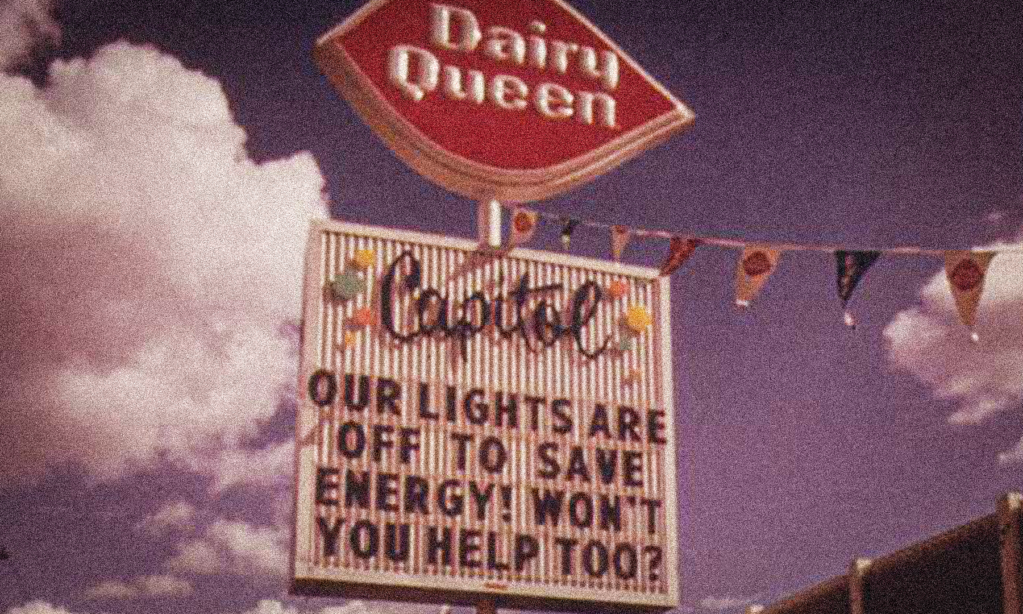While most experts are saying that this may be the peak, that the worst may be behind us, we shouldn’t expect prices to drop significantly anytime soon. Inflation will be with us for a while. And we hate it.
We hate it every time we fill up for gas or buy groceries or pay our bills or worry that our pensions won’t be adequate to our retirement needs. We hate it, and we want it fixed. A 1997 multi-country survey by economist R.J. Shiller found most people believe that inflation should always be a national priority. And we’re usually looking for somebody to blame. Inflation is a hot button. Paul Krugman recently wrote that no topic brings him more hate mail than when he writes about inflation.
The pressure on governments to act is intense, and the now ritualistic response is in full swing: interest rates on the rise, spending restraint, warnings of more to come to ensure that inflation doesn’t get out of hand. But is that what’s needed for today’s inflation, which is driven largely by global events—pandemic and war—even if those events stubbornly refuse to give us specific end dates? Was this ever the best alternative?
We haven’t always hated inflation or called for such harsh medicine to cure it. Historian Rebecca Spang traces how concern about inflation rather than the more serious deflation and depression took centre stage when we began to think of ourselves less as producers and more as consumers, an outlook she says hardened in the 1970s and is now axiomatic.
Inflation, in other words, is not just one thing once and for all. As Spang puts it: “The history of inflation isn’t skyrocketing prices inevitably caused by the same mistakes. It is, rather, a history of changing words, changing numbers—and most important, the people who change them.” The story of inflation is a story of shifting priorities, of winners and losers, of power.
To understand how our approach to inflation was shaped we need to go back to the 1970s.
Unsurprisingly, inflation is now dominating political discourse. Governments are being blamed for their spending habits. Central bankers are being blamed for not having seen this coming and for responding too weakly and slowly. Those who constantly warn of the dangers of inflation are rejoicing in their “I told you so” moment, even if, consistent with what’s said about the broken clock, they were bound to be right sooner or later. Most important, inflation and more particularly inflation-phobia threaten to upend our public agenda, pushing urgent challenges—climate change, economic insecurity and inequality, social fragmentation, racism and colonialism, failing infrastructure—further onto the backburner.
To understand how our approach to inflation was shaped we need to go back to the 1970s. One particularly useful entry point is the Trilateral Commission, founded in the 1970s by the same sort of folk who now attend Davos. Ostensibly their purpose was to promote cooperation among North America, Japan and Western Europe. But like Davos, the Commission provides a valuable window into what was preoccupying the rich and powerful. They were worried.
Theirs was a time of expanding democracy, both political and economic. Unions were strong. Social movements were pressing for gender equality, individual rights and freedoms, and the expansion of the welfare state to include those who had been left behind. These were heady days. And this was exactly what those in the Commission were worried about.
In 1975 they published The Crisis of Democracy, setting out what they perceived as the greatest risk to western democracies. The problem preoccupying them? “An excess of democracy.” People were getting too much power, regular people, working people, poor people, people of colour, people who had been excluded from the gains of the welfare state. All hell was breaking loose or so it seemed to the Commissioners. If democracy is always a wrestling match to determine who shapes the future, the powerful few or the many, the powerful few seemed to be losing ground. What, they asked, would be the consequence if “the many” got to be in charge? Expectations would go through the roof, they said. And who would end up paying?
Milton Friedman’s view of inflation as always a problem of too much money provided a perfect fit for these concerns. The risk according to this view: a spiral of expectations, higher prices leading to greater demands for wages and government assistance, leading to even higher prices and so on and so on, and eventually to chaos and crisis. The solution: rein in public spending, raise interest rates, snuff out demand; which, in turn, means more unemployment, lower wages, less investment, less help to those in need.
And that’s just what we got. Those in my generation will remember the 1973 oil crisis that brought with it soaring inflation and the eventual response: sharply higher interest rates and pressures to contain government spending.
And that perspective still shapes our thinking. Inflation hawks are yet again calling for tough medicine to tighten money, lower expectations and rein in demand. Even many on the left, while they might urge caution about moving too aggressively on interest rates and austerity, also seem to accept that inflation is about too much money and the job is to rein in demand and avoid a wage–price spiral.
But does that make any sense for today’s inflation, a global problem, caused largely by a global pandemic and lockdown, and aggravated by the terrible war in Ukraine and the sanctions that followed? One might ask if it ever made sense, or at least for whom.
Let’s go back to the oil crisis inflation. In the U.S. Paul Volcker, Federal Reserve chair between 1979 and 1987, is often credited with ending that inflationary spiral, if at great human cost, by raising interest rates to an unprecedented 20 per cent, the “Volcker Shock.” But recent analysis, even by the Federal Reserve itself, raises questions not only about whether the cure was worse than the disease but whether the Volcker Shock was the cure at all.
The Financial Times, for example, hardly a centre for left-wing thought, characterized the response to 1970s and 1980s inflation as a major skirmish in the class wars in which the powerful won a major victory, using inflation, buoyed by Friedman’s monetarism, as an opportunity to cool down expanding democracy and collectivism and, in particular, to diminish the power that labour had managed to acquire over the previous decades It attributes the end of inflationary pressures to the weakening of labour. In short, when we ask what works, we really ought to be asking what works for whom.
No doubt sharp interest rate increases generally bring down prices, but we need to understand what that feels like for the young graduate who can’t find a decent job, or for workers who lose theirs, or for those who can no longer afford their mortgage payments, or for small business owners who can no longer scrape by.
The last thing we need is a reactive, knee-jerk solution—a rapid rise in interest rates, say—that simply tries to put a break on demand. …(T)he source of inflation is not a rise in demand from greater prosperity but rather an exogenous increase in prices from Covid and Ukraine.
There are lessons here for understanding the risks we face today and the choices we have for managing those risks. First as economist Mariana Mazzucato, insists, we must stop treating inflation as a unitary thing, always the same and in need of the same medicine. Instead, we should be looking at which prices are going up and which are not, to see the sources of inflation in the real world as opposed to what it might look like in some economics text.
And we have to stop relying on the almost ritualistic solutions of the past few decades. As Mazzucato writes:
“The last thing we need is a reactive, knee-jerk solution—a rapid rise in interest rates, say—that simply tries to put a break on demand. …(T)he source of inflation is not a rise in demand from greater prosperity but rather an exogenous increase in prices from Covid and Ukraine.”
Inflation this time around is clearly not being driven by wage increases. Wages have been stagnant for decades, a result of weakened bargaining power—there’s a lot of catching up needed. The wage gains we are now seeing are lagging—not driving—inflation and, especially in such underpaid sectors as food and hospitality, should be seen as modestly good news rather than as a risk. Similarly, blaming inflation on the government cheques people and small businesses got to keep them afloat or alive during the pandemic—long since received and largely spent—not only makes no sense, it’s churlish.
What we should be addressing is not some highly improbable wage–price spiral but an already evident profit–price spiral. A recent Economic Policy Institute Report shows how major inflation drivers in the U.S. have been turned upside down since 2020. Simply, inflation is now driven primarily by rising profits. As Jim Stanford has shown, it’s profit not wages that constitutes an ever-increasing share of the Canadian economy. A report for Canadians for Tax Fairness by D.T. Cochrane describes how corporate profits in Canada are breaking new records and that’s true for both commodity and non-commodity companies. Clearly the cost of commodities is not the only reason for rising prices.
The story of inflation has always been a story about power and profit and it’s power and profit we should be focusing on in our response. What does that mean in real terms? Here are some examples of measures we could take without destroying jobs and taking us off course.
First, governments should spend whatever it takes to get us out the other end of this relentless pandemic and prepare for whatever bug comes next. That means fixing the gaping holes in our public health and healthcare system.
Second, given that it’s those already struggling who feel inflation pain most acutely, governments need now more than ever to ensure that essential services are universally available and affordable. Investments in pharma care, dental care, child care, and seniors care not only address affordability but strengthen the economy and bring more people into the labour market. Caring, it turns out, is not only good for the spirit, it’s good for the social fabric and for the economy.
Third, while some income supports are indexed to inflation, too many are not, including most provincial tax credits for children, seniors and people with disabilities. Income supports should be increased and indexed. As Mazzacuto aptly puts it, nobody should ever be forced to choose between eating and heating.
The complaint that “too generous” social programs are the cause of labour shortages not only seriously exaggerates the “generosity” of these benefits, it ignores more plausible explanations: an aging population and a spike in retirements, a lack of affordable child care, and low wages and lousy and unsafe working conditions. Is it any wonder that where we find the lowest wages, in accommodation and food services, we also find the biggest “labour shortage”?
Fourth, one of the most important things we can do both to help families struggling with price increases and to address staff shortages in some sectors is to strengthen collective bargaining and labour protections, especially important after decades of stagnant wages and the increase in employment precarity.
I might add, given my resume, that governments really ought to stop looking at public service and public servants as politically easy targets for cuts when what’s needed is more investment in tools and talent to meet our collective challenges. Surely COVID-19 has shown us both the huge importance of the public service and the enormous costs of austerity-driven cuts.
Fifth, for the long term there can be no higher priority—for the planet, for humanity, for all that we value—than freeing ourselves from fossil fuel dependency. And Mazzacuto has made a compelling case for how such mission-driven public investment is also essential for building the new economy. The idea of industrial strategy seems to be making a welcome comeback and what strategy could possibly serve us better than some version of a green new deal?
To some extent price increases reflect years of externalizing the costs of climate change. For example, agri-food experts at Dalhousie University have shown how higher prices for food staples are a result of supply chain kinks caused both by the pandemic and unfavourable weather patterns. As Max Fawcett wrote in the National Observer, “while the supply chain disruptions caused by COVID-19 will get better, the potential impact of climate change will only get worse…. because the costs we’ve long externalized, from carbon emissions to plastic pollution, are now going to have to be borne by companies and consumers.”
The price of gas and oil poses a particular challenge. We don’t want to invest in initiatives that will lock in our dependence and make it even less likely that we’ll meet any of our emissions targets. But even here there are some immediate and medium-term measures that could make a difference. What about free public transportation? What about accelerating help to households and businesses for retrofitting homes and buildings?
Sixth, we have to get at excessive profit and the outsized power of big firms to set prices. Nothing would set people’s hair afire more than to talk about price controls but we at least ought to consider more rigorous enforcement of our competition laws and to look at how we tax profits. The federal government’s decision to implement an “excess profits tax” on the banking industry is welcome, but why not across all sectors?
Indeed, if there is too much money sloshing around—and landing in the pockets of a very few—a straightforward way to extract it is taxes, specifically higher taxes on the wealthy and corporate profits, to ensure that inflation is not simply making the rich richer but also to strengthen our collective toolkit to get done what needs doing and to contribute to rebalancing power.
Our challenge goes beyond a list of policy options. To address inflation, we have to get at the structure of our economy: the impact on prices of corporate concentration; the high cost of fragile global supply chains; the hidden costs of climate change and environmental degradation and our too slow response to both; how our tax policies contribute to a transfer of wealth to the already wealthy; how treating housing as a commodity for investment and speculation turned shelter costs into a national crisis; and how decades of eroding bargaining power for workers and squeezing social benefits and services made it much harder for many to manage day-to-day expenses, let alone spiking prices.
We have long been told that we can’t afford the society we want, that mitigating fiscal risks—particularly runaway inflation—takes precedence over all else. But we must decide, in this age of crisis, just what’s most important to us. That means weighing fiscal risks against the risks posed by climate change, by inequality, by social fragmentation. We might even ask whether inflation a few points higher than the “preferred rate” of two per cent is too high a price to pay to meet our collective challenges so long as we ensure access to the essentials and help those already struggling.
What’s needed is not more of the same: another round of austerity, cuts to public service, sharply higher interest rates. What’s needed is not a lowering of expectations but a raising of aspirations for a more just and sustainable future, for more democracy, for a rebalancing of power. We have alternatives.







